electromagnetic NDT solutions
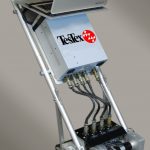
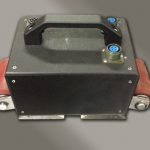
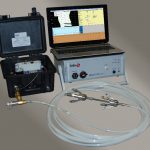
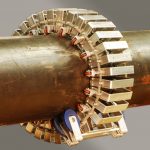
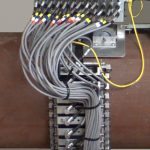
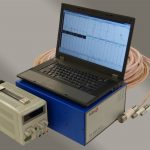
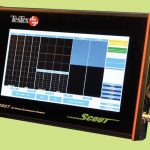
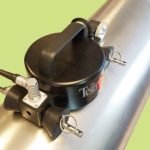
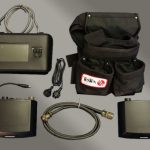
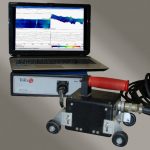
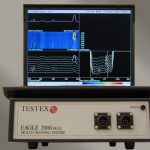
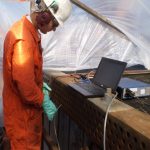
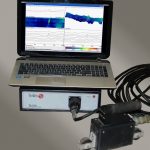
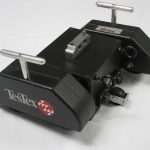
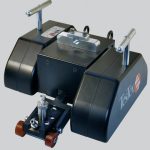
Electromagnetic NDT Solutions
BFET Products
The Hawkeye 2000 and its variants use the principles of Balance Field Electromagnetic Technique (BFET) to detect surface and sub-surface cracking in welds and base metal. With maximum scanning speeds of one foot per second, the Hawkeye 2000 is much faster than conventional NDT techniques such as dye penetrationand magnetic particle testing. The Hawkeye 2000 can virtually be used anywhere that cracking is an issue, including the scanning of both ferrous and nonferrous metals. It can be used on pressure vessels, general vessels, windmill towers, storage tank floors and shells, and bridges. The Hawkeye 2000 offers real-time data processing, and data can be displayed in horizontal, vertical, and impedance planes. Noise and liftoff can be rotated away from the flaw signal. It offers up to eight (8) channels and a frequency range of 5Hz – 30KHz. The Hawkeye 2000 has many weld applications, including tube-to-header weld and dissimilar metal weld inspections. It also works on a variety of different types of welds, including butt-welds, lap-welds, and T-welds. For butt welds, no couplant is needed, the Hawkeye offers four inches (101mm) of coverage per pass and inspects both sides of the weld with one pass. For vessel inspection, the Hawkeye 2000 requires minimal surface preparation and detects cracks, undercuts, porosity, slag, etc. On surfaces, the Hawkeye 2000 requires minimal preparation and detects surface and sub-surface cracking without coatings. The Hawkeye detects cracks to a depth of 0.125 or one-eighth-inch (3mm) from the surface in carbon steel, and it covers a swath of up to eight (8) inches (203mm) on a single pass.
Hawkeye variants include:
Single/Multi Channel Hawkeye Scanner
- Up to 16 channels
- Detects surface and subsurface cracking to 1/8″ (3mm)
- Lightweight ergonomical design
- Scans circumferentially around object
Deep Penetrating Pencil Hawkeye Probe
- Detects flaws with up to 3/8″ (10mm) liftoff from the surface in carbon steel
- Scans 1/2″ (12mm) path
- Compact design
- Easy to use
Detection of Corrosion Under Insulation
OSET – Scout
TesTex has developed an innovative system for the detection of Corrosion Under Insulation (CUI) using our proprietary Off Surface Electromagnetic Technique (OSET). The Scout system allows you to pinpoint the areas that require attention, instead of needlessly stripping insulation or doing thickness checks.
Detection Capabilities
| Cladding Material | Insulation Thickness | ||
| Wall Loss Detection | Pit Detection* | Weld Detection | |
| Stainless Steel | up to 4″ | up to 3″ | up to 4″ |
| Aluminum | up to 3″ | up to 2″ | up to 3″ |
*30% Surface Depth, 1″ (25.4mm) Diameter Pit Detection
Options
- Mapping Software
- Extra batteries/chargers
- (23m) extender cable
- Specialty calibration pipes with specified defects (a standard pit calibration pipe and a welded calibration pipe is included with the system purchase)
Mag Wave ET
The benefits of this inspection method are:
- Small pitting can be detected
- Large volume flaws can be detected and quantified
- Saturation can be adjusted to eliminate signal noise due to finned tubes
- Differentiates between ID and OD flaws
Normally Ferrous Eddy Current Technique is not available, but with the Mag-Wave ET (MWET) this is possible. There are currently a wide variety of MWET probe sizes, it utilizes the TesTex TX-4400 and its companion PD-6k probe driver. All data can be imported into the 3-D Tube Sheet Mapping Software for an overall visual of the equipment being tested.
TX-4400 ECT Inspection System
The TesTex TX-4400 ECT Inspection System is based on the Eddy Current Technique to quickly and accurately inspect non-ferrous metal tubing from the tube ID. It detects and sizes ID/OD pitting, baffle cutting, erosion, steam impingement, general wall losses, and other defects. Applications include:
- Condensers
- Feed Water Heaters
- Coolers
- Evaporators
- Chillers
The TX-4400 offers eight standard channels with a multiple of mixing channels for better flaw sizing and detection and a 1KHz to 1.2MHz frequency range, and automated and Manual analysis done on-site.
It is fully digital and offers real-time mixing and a wide variety of special data filters and is compatible with bobbin, surface, and magnetic saturation probes. Unwanted signals such as support plates can be suppressed, and the system can be used in conjunction with our TS-Map and AR-Wizard software; so, a final report can be delivered on-site.
TheTX-4400 can also be used for ferrous inspection to detect large flaws and small pitting and to distinguish between between ID and OD flaws. (Saturation can be adjusted to eliminate signal noise due to finned tubes, too.)
The system has differential and absolute responses for each frequency and a built in reference signal to generate an absolute signal without the use of a reference probe.
The TX-4400 electronics box is coupled with a laptop computer to operate the system through MS Windows-based software. All data is archived for analysis and processing as well as for comparison for future inspections. The data can be imported into the 3-D Tube Sheet Mapping Software for an overall visual of the equipment being tested.
Real-time mixing is available for suppression of support/baffle plates. The system may view absolute and differential modes at the same time.
The electronic boards are designed for independent operation to permit easier troubleshooting, repair, and expansion. Each of the main circuit boards is designed to act as a nearly complete single frequency system. More frequencies can be added to a system by inserting additional circuit boards to the backplane board.
Depending upon the configuration, the TX-4400 offers either high-speed inspection, which provide maximum speeds of five feet per second (1.52m/sec) or ultra-high speed insertion, which has a maximum speed of 20 ft/sec. and probes may be driven manually or with one of two optional probe drivers: the PD 6k or the PDP 22.
Both connect directly to the TX-4400 and use the same software, and are durable and reliable.
PD 6K
As its name implies, the PD 6k is a six kilogram (6 kg or 13.2 pound) probe driver.
It is extremely portable and lightweight.
It permits high-speed probe insertion, adapts to different air fittings, and needs only (regular) plant air to operate.
With the PD 6k, it is possible to inspect up to eight tubes per minute and 2,000 – 3,000 tubes per team per 12 hour shift.
The PD 6k can be used with ferrous or non-ferrous metal.
PDP 22
The PDP 22 fits in 16” (406mm) manways, and permits retrieval and inspection at constant speed. Maximum insertion speeds are 20 ft/sec (6.10m/sec), and maximum inspection speeds are 10 feet/sec (3.05m/sec).
It is “over-designed” to ensure a long operating life, and its modular components are easy to maintain and repair. It allows 110/220V operation.
With its automated analysis, it can inspect up to twelve (12) tubes per minute, and 4,000 – 5,000 tubes per team per 12-hour shift.
EMEC (ElctroMagnetic Eddy Current)
To inspect ferrous tubes, TesTex developed the EMEC technique, which uses special probes with the TX-4400. A wide variety of probes, which operate at frequencies of 1KHz to 500KHz are available, and they can automatically inserted with the PD 6k. As with our ECT probes, automated analysis is available.
With strict quality assurance procedures, all probes and accessories manufactured by TesTex are of the highest quality; so, we are able to provide probes with both excellent response signals and very low noise levels.
LFET Products
Line CAT
Using the Low Frequency Electromagnetic Technique (LFET), the lightweight, aluminum, TesTex Line CAT quickly and accurately scans the outer diameter (OD) of ferrous and nonferrous pipes and detects gradual wall loss, pitting, gouging, and other defects.
The Line CAT comes in many variations, and with its modular design, featuring many interchangeable parts and components, the versatile Line CAT can be quickly adapted to fit many pipes starting from 3 inches (For those pipes less than ten (10) inches in diameter, the Line CAT performs 360° scanning. For larger pipes, it scans 120°, or one-third of the circumference, with each pass. Its can also be outfitted with an optional encoder.)
The TesTex Line CAT can be propelled by an optional remote-controlled, magnetic wheeled “crawler,” which is capable of traveling up to ten (10) feet per minute. (See below.)
The crawler’s contoured top shell supports and stabilizes the main sensor array.The sensor array itself, is made up many scanning pods that contour to the actual geometry of the pipe via a flexible coupling system.The Line CAT travel around bends and over welds, and all components can operate in Arctic conditions down to -40° Fahrenheit. It scans through uniform scale, rust, or coatings.Scan results are shown on a high-resolution 3D graphics display.In addition, the Line CAT can be shipped overnight anywhere in North America and within 3-10 days anywhere in the world.
Field Application
The Line CAT system was field tested on sections of two insulated crude transit pipelines on the North Slope of Alaska. The insulation was removed from both pipelines. One pipeline had anti-corrosion tape, while the other was bare. These sections were tested with three different techniques: (1) the Electromagnetic Acoustic Transducer Technique (EMAT), (2) Automated Ultrasonic Thickness (A.U.T.), and (3) our Low Frequency Electromagnetic Technique via a Line CAT system.
Although A.U.T was able to give actual thickness readings, it had a very slow scan rate. EMAT displayed scan rates faster than the A.U.T., but the Line CAT was by far the most productive. Both EMAT and LFET demonstrated a 100% POD (probability of detection) for 25% wall loss isolated pitting at a 3:1 aspect ratio. EMAT displayed a reduction in the scan rate over the tape-covered section, from 1,000 ft per day on uncoated piping to 500 ft per day on tape-coated piping.
The scan rate of LFET remained unchanged over the tape-coated piping (approximately 10 ft per minute). Also, LFET has a false positive over call rate of less than one percent (1%). The field test clearly showed that the Line CAT’s LFET Technique was the most efficient method with the tape coating and had the highest overall productivity for the job.
LFET Products
Line CAT Plus
The Line CAT Plus takes the field knowledge we have gained from using the Line CAT and leverages it to create a robust tool for the detection of flaws in pipes and pipelines. Based off of our LFET technology, the Line CAT Plus is able to scan through coatings and paints to detect both internal and external defects. The Line CAT Plus has several new features that greatly enhance its ability and ease of use.
Scanner Pods
The new scanner pods are equipped with either four or eight distinct pickup channels, depending on the size of pipe you are scanning. This allows for a higher resolution scan and more accuracy when determining the exact location of the flaws and their volume. Each scanner pod is equipped with an LED indicator that illuminates when the scanner is over a flaw so you can determine visually where the flaw begins even without looking at the display screen.
Software
The software has been refined to allow you to see the largest flaw response from each individual scanner pod, so you can see a zoomed out view of the pipe as it has been scanned. You are also able to zoom into the pods and see the individual channels just from one pod or all the pods in a general area.
Computer and Hardware
Instead of relying on a laptop receiving and processing information from the electronics box, we have combined the electronics box with a fully functional MS Windows computer. The Line CAT Plus is able to handle a total of 288 individual channels allowing it to handle more scanner pods and give higher resolution imaging. More area can be scanned in a single pass, speeding up the overall inspection. Linear and angular encoders allow for accurate flaw location. The computer stores scanned data, and can be accessed via VPN with an iPad, Tablet or laptop wirelessly to show real time acquisition results, or it can be connected to a monitor via VGA output. Data can be extracted using a USB drive or network port.
PS 2000 Inspection System
The TesTex PS-2000 Multichannel NDT inspection system quickly and accurately inspects ferrous and non-ferrous metal tubing from the pipe’s OD.
The PS-2000 is based on the Low Frequency Electromagnetic Technique (LFET) and normally has eight channels for detection of microbiological induced corrosion (MIC) Attack, flow accelerated corrosion (FAC), cracking, erosion, corrosion, and pitting wall losses.
The PS-2000 LFET scanner has the following features:
- Light weight scanner attachments
- Large frequency range 5Hz to 30KHz
- Real-Time Display
- Operates manually or with motorized crawler
- Scanner cable lengths up to 100’ (30 m)
- Scans through paints and coatings
Prodigy 8 Scanner
The Prodigy 8C is an innovative OD scanning system that permits testing of in-service tubes and pipes for almost any boiler.
It is a one-man, multichannel, NDT system that detects and quantifies ID, OD and internal material defects in ferrous materials.
The system uses a dry, non-contact method and is based on our Low Frequency Electromagnetic Technique (LFET).
The Prodigy 8C system has its own built-in computer that is conveniently attached to the operator’s body.
This system can be adapted to many different applications such as testing ligaments, bends, space-constricted areas, and small-diameter tubing.
The Prodigy 8C is fast, accurate, cost-effective, and field proven.
The Prodigy 8C offers the following features:
- 8 channels (8 phase, 8 amplitude)
- Frequency selection from 5 to 80 Hz
- MS Windows Based with a USB interface
- 1 GHz Processor, 1 GB RAM, and 16 GB compact flash
- 6 LCD display with VGA controller
- Environmentally-sealed connections
- AC or DC operated
- Standard six-foot (1.83m) or optional 25-foot (7.62m) scanner cable
- Total weight under 12 lbs (5.45kg)
- 5-hour of battery life
TS 2000 Tube Scanner
The TesTex TS-2000 LFET Tube Scanning System uses the Low Frequency Electromagnetic Technique (LFET) to quickly scan tubing in boiler waterwalls, reheaters and superheaters in utility boilers and large industrial boilers.
Inspection are performed from the tube OD (outer diameter), but flaws can be detected on both the OD and ID surfaces.
In addition, both magnetic and non-magnetic metals can be scanned (as can economizer tubing).
The TS-2000 scanners have concave surfaces to match the OD of the tubing. Depending upon the tube’s diameter, either eight (8) or sixteen (16) sensors are used, and they are equally spaced within the concave surface of the unit. The sensors do not touch the surface of the tube.
Usually a 120-degree span of the circumference is scanned as TS-2000 moves along the tube’s length.
The TS-2000’s sensors are very small–a few millimeters in diameter–greater detection capabilities for smaller flaws such as pitting as well as the display of high resolution, real time, 3-D, color graphics of the scan results. Results can be saves for further analysis or permanent archiving.
The TS-2000 System detects flaws, including corrosion cells and hydrogen damage, caustic and phosphate gouging, oxygen pitting, departure from nucleate boiler, ID pitting, corrosion, and erosion.
Cracking is also detectable and its detection can be optimized by modifying the pick-up coil configuration.
Additional features of the TS-2000 are:
- Special Scanners made that only have ½” stand-off therefore being able to scan reheater tubing
- No surface preparation needed for gas or oil burning boilers
- Quality high-pressure water blasting usually sufficient for coal burning boilers
- 2,000 – 3,000 linear feet of tubing can be scanned in a 10-12 hour shift with one inspection team
- Scanning can be conducted from skyclimbers or hard scaffolding
- Low signal-to-noise ratio
- Scanner sizes from half-inch (½″) OD tubing up to maximum tubing OD
Advantages over Competing Technologies
Other methods of boiler tube inspection include:
- Ultrasound (or UT), which scans for thickness, A-Scan, B-Scan, C-Scan, time of flight diffraction, and phased array;
- RT or X-Ray
- ElectroMagnetic Acoustic Transducer or (EMAT)
For ultrasound and ElectroMagnetic Acoustic Transducer methods, boiler tubing needs to be sandblasted, or spot-prepared for individual discreet UT thickness readings. In addition, neither the ultrasound nor ElectroMagnetic Acoustic Transducer method provide rapid scanning coverage; UT merely involves spot checks while EMAT only scans a strip of tubing less that one-quarter-inch (¼″) wide.
RT/X-Ray methods have obvious deficiencies, including getting coverage and limitations to testing while other outage activities are occurring.
Unlike competing products, for both natural gas and oil burning boilers, the TesTex TS-2000 LFET requires no surface preparation, and in coal burning boilers, a quality, high-pressure water blast usually suffices for the TS-2000 to be effective. The TS-2000’s efficacy is due to the fact that the TesTex LFET is a non-contact method; the scanner surface containing the sensors does not touch the tubing. Because the TS-2000 operates as a very low frequency (usually 10Hz or lower), any non-magnetic deposits do not affect the passage of the electromagnetic field. In fact, iron oxide does not affect the signal path because it is a very “puffy” material compared to the base metal of the tube.
Viper Crawler
The Viper Crawler System is an advanced, lightweight, and modular crawler that carries ultrasonic transducers or Low Frequency Electromagnetic Technique (LFET) scanners to inspect horizontal and vertical magnetic surfaces.The Viper Crawler System has strong permanent magnetic wheels that hold system to the surface even through several layers of paint, and a long-lasting, high-torque planetary gear mechanism.
It is controlled with a handheld joystick and operates at variable speeds. For Ultrasonic Thickness Inspections, a water pump is used to deliver water underneath the transducer to act as a medium.
The Viper Crawler System is available in several designs for the inspection of tanks, stacks, and pipes, and is compatible with any flaw detector.
Reporting and Mapping Software
3D Tube Sheet Mapping Software
The Testex Inc. developed TS-MAP 3-D Mapping software makes it easy for users to create a 3-D model of even the most complex condensers, feedwater heaters, heat exchangers, etc. with little effort and in a short amount of time. When used with the optional AR-Wizard report generating software, a full report can be generated to include everything from full color maps to sample waveforms.
Up to a 40,000 tube tube sheet map can be drawn using the TS-MAP 3-D software and up to 26 sections/zones can be identified. Any tube sheet layout can be created in the software with tube dimensions in inches or millimeters.
The TS-MAP software allows the user to easily insert baffles, end caps, nozzles, flanges, and bolts through drop down menus for an exact drawing of the unit. Defects in the unit can be displayed by baffle or encoder position. Users can hide baffles, tubes, etc. with a simple click of the mouse to see the exact position where in the tube their problem area lies. This helps the user identify their failure mechanism (i.e. baffle cutting, steam impingement, etc.)
RFET Products
RFET
The Eagle 2000 detects and quantifies flaws such as baffle cutting and fret wear, erosion and corrosion, pitting, soot blower thinning, flue gas erosion, and steam impingement. Cracking is also detectable with suitable adjustments to the pick-up coil configuration and proper calibration.
Advantages over Competing Technologies
Other inspections methods for carbon steel tubing are internal rotating inspection system ultrasound (IRIS UT) and magnetic flux leakage (MFL).
The IRIS UT method requires extensive tube cleaning for the technology to work because the ultrasonic signal does not easily penetrate through oxides, scale, deposits, or debris. If the tube’s ID surface can be cleaned down to near bare metal finish, the IRIS UT technique can be successfully applied. TesTex does offer IRIS UT inspections as a service.Magnetic flux leakage testing also requires substantial tube cleaning because the flux leakage probe needs to have a good “fill-factor” (snug fit) compared to the tube’s ID. Because the MFL employs magnets in the probe heads, the probes collect any magnetic deposits that are remain in the tube. While the IRIS UT method has very good flaw quantification capabilities, the MFL method is less quantitative and more qualitative. The TesTex Eagle 2000 Multichannel System does not require extensive tube cleaning because the RFET system allows for usage of probes that do not need a tight fill-factor compared to the tube’s ID. RFET probes do not use any permanent or electro-magnets; therefore, the RFET probe heads do not collect any magnetic deposits or debris. The TesTex Eagle 2000 Multichannel System is quantitative with usage of the proper calibration standards.
Features
- Real Time 3-D Color Graphic Displays for Data Acquisition and Data Analysis/Display
- Inspects Straight Sections and Bends; U-Bends can be inspected with special probes
- 300-400 tubes average productivity of one system in a 10 – 12 hour shifts
- Inspects through scale on the ID or OD
- Probe Fill Factor not critical to operations
- Numerous Signal Processing Algorithms available for Data Analysis
- Windows Based Software
- Small, Lightweight, Modular, PC Based Design
- 110/220V Operation
- Probe sizes range from 0.320 inches (8.1mm) to 6 inches (152mm)
- Low Signal to Noise Ratio
- Probe lengths of up to 150 feet without signal pre-amplification
- System Frequency Range of 5Hz to 30KHz. (lower frequencies are critical for the inspection of thicker walled Carbon Steel tubing and Air Cooler – Fin/Fans)
Tank Floor Scanners
Falcon S Series
The Falcon S Series is a tank floor scanner based on Saturation Low Frequency Eddy current Technique. It scans tank floors by saturating them with an electromagnet and then uses Eddy Current to detect defects in the plate as it scans over it. With this technique we are able to detect pits, holes, cracking, and wall loss, and differentiate the orientation of the flaw depending on if it is a top side or bottom side flaw. This scanner is the latest in tank floor scanning technology.
Differences from other Falcon products
The underlying technology is what makes this scanner a better tool for sizing flaws. LFET is better suited to detection than sizing, and is an excellent option for some of our clients needs. The Falcon S Series uses similar technology to our Mag Wave system, in that it brings Eddy Current accuracy to Ferrous plates. The highly sensitive nature of eddy current allows the scanner to detect and size top side and bottom side pitting, and localized wall loss. Additionally, The Falcon S Series can detect cracks. One other exciting feature is the ability of the Falcon S Series to scan through non-metallic coatings of up to 0.5 in. (12mm)
Tank Floor Scanner
- Self propelled with adjustable scanning speeds
- Scanning path 14 in. (355 mm)
- 16 channel array for high resolution scans
- Penetration of 1.2 in. (30 mm)
- Scans through up to 0.5 in. (12 mm)of non-metallic coatings
- Built in encoders
Hand Scanner
- Designed to scan hard to reach places
- Scanning path 5 in. (127 mm)
- 4 channel array
- Penetration depth of 0.75 in. (190 mm)
- Scans through up to 0.35 in. (9 mm)of non-metallic coatings
Ultrasonic Thickness Gauging
Echo 20/20
Ultrasonic Thickness Gauge
The Echo 20/20 is an innovative, yet easy to use instrument for ultrasonic thickness gauging. This handheld thickness gauge is fully compatible with a full line of single and dual element transducers. The Echo 20/20 is also compatible with the Viper Crawler for hard to reach thickness measurements. A sunlight readable color display allows for optimal viewing in some of the toughest outdoor conditions and a simple, ergonomic keypad can be used by either a left or right handed operator, while having easy access to all functions.
Features
- Dual and single element transducer compatibility
- Thickness range of 0.003″ (0.08 mm) to 6″ (152.4 mm). Dependent on material and transducer type
- Echo to echo measurements on painted and coated surfaces
- Standard resolution of 0.001″ (0.01 mm) for all transducers
- Multilayer software option for measurements of up to two layers
- Thickness and velocity measurements
- Time based B-scan mode
- Sunlight readable, TFT color liquid crystal display
- Simple keypad for right or left hand operation
- Internal microSD memory card storage
- USB communication port
- Direct export of internal files in Excel compatible CSV (comma-separated values) format
- Download and upload thickness surveys to and from the gauge
- Supports a quadrature encoder
Ultrasound Products
Helix XT IRIS
The Helix-XT is an ultrasonic based system for inspecting ferrous and nonferrous tubes from the inside. It is based on the Internal Rotating Inspection System (IRIS), which can be applied on almost any material.
With the Helix-XT, accurate thickness measurements can be taken at any location along the tube, so small changes in thickness are measurable and the exact location of pitting and corrosion can be determined.
The system uses an immersion pulse echo technique in which a stream of water is used to spin a turbine containing the transducer: see below.
The turbine rotates a mirror, set at 45 degrees, to reflect the ultrasonic pulses radially into the tube wall.
Reflections from the inner and outerwalls of the tube follow the same path back to the tranducer. The time interval between the first echo–the inner wall–and the second echo–the outer tube wall–measures the tube’s wall thickness.
One hundred percent of the tube is inspected through a helical path, which is created when the transducer head traverses through the tube.
The Helix-XT has a user-friendly setup panel and UT board control interface. Data is acquisition software records A, B and C scans and takes up to 719 readings per revolution.
A full-color data viewer software illustrates B and C scans.
The Helix-XT inspects tubes up to 30 meters (99 feet) in length with diameters from 0.350 inch (8.9mm) to 3.5 inches (88.9mm).
It includes a submersible, stainless steel pump with filter, and water flow adjusts up to 10 gallons per minute (GPM).
TA-2000
The TA-2000 is handheld UT scanner with data recording capability. It inspects ferrous and nonferrous materials and provides instant material thickness readings. Can inspect high temperature surfaces with special couplant. It is menu-driven and has an attached four-step, steel calibration block. It has a a dual-element transducer and A Scan display and is housed in a protective vinyl case with shoulder strap.
Viper Crawler
The Viper Crawler System is an advanced, lightweight, and modular crawler that carries ultrasonic transducers or Low Frequency Electromagnetic Technique (LFET) scanners to inspect horizontal and vertical magnetic surfaces.
The Viper Crawler System has strong permanent magnetic wheels that hold system to the surface even through several layers of paint, and a long-lasting, high-torque planetary gear mechanism.
It is controlled with a handheld joystick and operates at variable speeds. For Ultrasonic Thickness Inspections, the Viper Crawler is paired with the Echo 20/20 Ultrasonic Thickness Gauge and a water pump, which is used to deliver water underneath the transducer to act as a medium.
The Viper Crawler System is available in several designs for the inspection of tanks, stacks, and pipes, and is compatible with any flaw detector.
